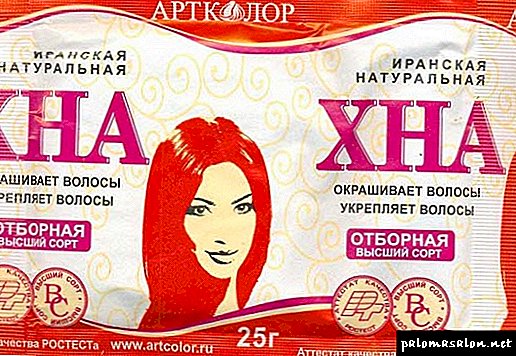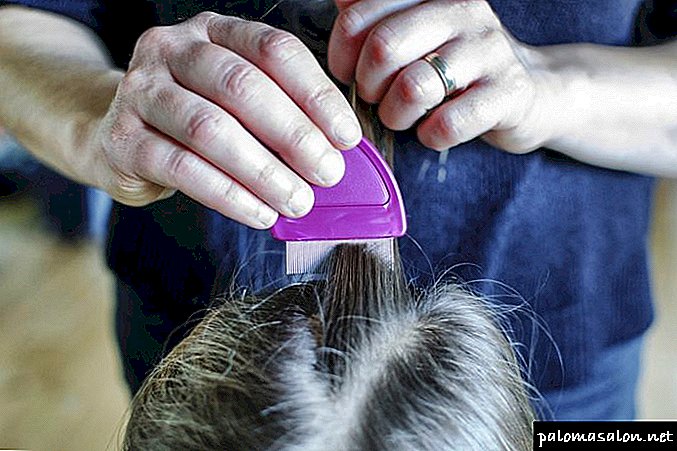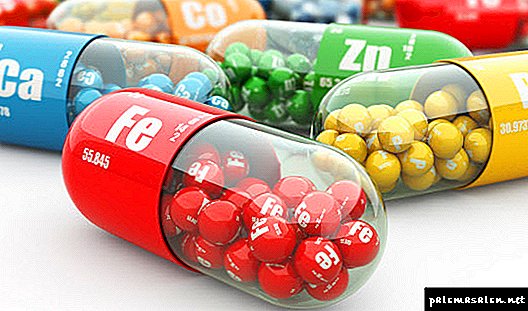Henna for hair is a high-quality natural dye and at the same time a way to make your healthier. Strong and well-groomed hair is the dream of any girl. But all hair products have their drawbacks. Let's look at what the harm and benefits for hair are and who really should use henna.
Advantages and disadvantages
Henna for hair is good primarily because it is a natural remedy for dyeing and strengthening curls.
This tool helps to solve many problems faced by girls. Since the powder is a natural antiseptic, it can cure dandruff and other skin diseases.
High-quality natural henna can strengthen curls. It nourishes them from the inside, strengthening the hair follicles. So curls after its use become thick and strong. They cease to split and look well-groomed.
If you want to use this tool for coloring, then this also has its positive aspects. Painting with such a tool is the easiest and most natural way to change the color of curls without changing their structure. Color as a result turns out saturated. If you are afraid that the color, as well as the pattern on the body will come too fast, you can not worry. Your strands will look bright for a few days, and then the color will gradually wash out, which also looks good.

Henna for hair does not cause allergic reactions, so almost everything can dye hair in this way. So if redness and inflammation appear on your skin after dyeing with a simple paint, then this is an option for you. It is possible to be painted with henna even for pregnant women or nursing moms.
Now it is worth mentioning some shortcomings. It is believed that henna can really damage the structure of the hair. Let's find out if this is so. First of all, the lack of henna is that she is not always able to paint her hair. This tool does not fit well with gray hair or a previous coat of paint. So, for example, blondes, who decided to use henna after lightening their hair, may find that curls have acquired an original green tint.
Henna and its positive effect on strands
About the positive qualities of this substance is known from the time when the store shelves were not filled with hundreds of very different "chemical" brands. And, truth, it is almost impossible to overestimate the value of henna. One has only to look at the luxurious braids of oriental beauties, who have long used the Iranian powder not only for painting, but also for the overall healing of the strands. Natural henna:
- Helps to cure dandruff, as it is a natural antiseptic,
- Colors strands without changing their structure,
- Gives rich and lasting color,
- Strengthens the hair follicle,
- Smoothes hair scales, not allowing them to stratify and split,
- Makes the hair shiny and smooth
- How is henna good for hair? It does not cause allergic reactions that women who are prone to irritation and redness will certainly appreciate,
- Tannins contained in henna regulate the activity of the sebaceous glands and improve the condition of the epidermis,
- She has practically no contraindications, you can even use her during pregnancy and breastfeeding,
- There is also no age limit on using this tool,
- Makes the hair more dense
- Reduces strand breakage.

Are there any disadvantages?
Is henna harmful to hair when dyed? This question does not lose its relevance for a second, because every girl dreams not only about beautiful, but also about healthy hair. What are the disadvantages of natural henna? She is:
- Bad paints over gray hair,
- Incompatible with ordinary paints. If you decide to use it on already painted strands, the color may not be at all what you expected. The same applies to the application of paint on the hair, previously painted with henna. In this case, the shade will be green,
- Negatively affects the wave. She will straighten your curls in two bills!
- Dries strands and scalp. Tannins that have a positive effect on oily skin are extremely undesirable for dry hair type. Having lost a large amount of moisture, the strands begin to break and fall out,
- Frequent application of henna breaks the protective layer of the strands, and this leads to the appearance of dullness and split ends. Yes, and the hairs themselves lose their elasticity, becoming tough and naughty,
- It fades in the sun. However, all coloring agents have this disadvantage,
- Fix a bad result with chemical paint is almost impossible. Henna, which has enveloping properties, simply will not allow other pigments to penetrate inside the hair.

How to reduce the harmful effects of henna?
Now you know all about the dangers and benefits of henna for hair, but the most interesting is yet to come. You will not believe, but any of you can level the negative impact of henna! To do this, follow some basic rules:
- Do not perform staining more than once a month.
- Do not abuse masks based on colorless henna. For the beauty of the hair enough one session per week.
- During dyeing strands, even try to combine natural henna with chemical paint. The result will be disastrous.
- Do not deviate from the instructions on the package. Incorrect preparation of the coloring mixture will lead to a radical change in color.
- She is afraid of high temperatures. Diluting it with boiling water only will completely lose all useful properties. Be sure to cool the liquid to 70 degrees and only then pour powder on it.
- Before any henna staining, do a preliminary test for a thin strand.
After going through many centuries, henna remains among the best skincare products, and if used wisely, it will work wonders with your hair!
Positive sides:
- No allergic reactions
- Ability to use during pregnancy and lactation,
- Henna for hair has antiseptic properties and helps get rid of dandruff,
- When stained, the structure of the strands remains unchanged,
- The result of staining keeps for a long time
- The hair becomes smoother, which prevents the cross section of the tips,
- Strands acquire a lively sheen,
- Regulated the work of the sebaceous glands, which is so necessary for women with often dirty hair,
- Henna strengthens the hair and reduces their fragility.
Negative sides:
- Henna for hair is not suitable for painting gray hair - the effect will be barely noticeable and will quickly wash off,
- Natural dye is not compatible with chemical. If, after using henna, you want to use ordinary paint, or vice versa, the hair color can turn green. It will be very difficult to paint over this non-aesthetic effect,
- Henna neutralizes the effect of curling, straightening hair,
- With frequent use, dry hair and scalp. Henna need to dye hair no more than 1 time in 2-3 months,
- The effect of staining fade in the sun
- If the result does not suit you, you will fail to correct the situation with the help of chemical paint.
Recommendations for use
If you decide to dye your hair with henna, it will be useful for you to learn about its little secrets so that the result of dyeing will bring maximum benefit. The rules are very simple:
- Test for strands. If you doubt the result, do not rush to dye your hair completely. Getting rid of the persistent effect of henna is not as easy as we would like. Test the paint on a small strand of your hair, and at the same time determine the exact time of dyeing to get the desired shade,
- Follow all instructions from the instructions! As a rule, any henna, and Indian, and Iranian, is diluted with water at a temperature of 70 degrees. Henna for hair can be diluted with boiling water, and it will not cease to be a dye, but will completely lose its useful properties. Everything mentioned on the label is very important
- Moisturize hair. Henna has a drying effect, and if you use it more often 1 time in 2 months, regularly do moisturizing hair masks.
How to dye hair with henna
Depending on the length of the hair, 25-100 grams of dry powder paint is ground in a glass dish with the addition of hot water or strained through a sieve of natural coffee to the state of liquid slurry. For uniformity of color, you can use binding components, namely, shampoo or glycerin. So that the coloring effect will not disappoint you, paint a small strand first. If you are done with the preparations, you can begin to dye your hair like this:
- Moisten clean hair and lightly dry,
- To protect the skin from staining, lubricate the outer side of the ears and the upper part of the forehead with petroleum jelly. Be sure to use gloves for dyeing hair,
- Paint on the hair should be applied as quickly as possible, until it is cooled. Start dyeing hair from the back of the head. Split the hair into partings at a distance of 1-1.5 cm from each other, paint the roots with a brush, then gradually get down to the ends,
- The hairs on the outer contour are the last to touch, because they are thinner and dye faster.
- Wrap your hair in a plastic bag or a special hat, and warm with a towel on top.
What is henna?
In stores, henna boxes usually stand on the lowest shelves. Sometimes it is sold in plain paper bags, when looking at which there is no desire to buy it. But this is only at first glance! The fact is that henna needs no advertising! This is a real natural dye, absolutely harmless to hair. At its core, this plant is ground to powder. The color of the powder is green, but you should not be afraid of it - you will not turn green. With the help of this in a good sense of the magic powder, you can treat the hair, at the same time giving it the desired color. And not only red, which people can assume.
How to breed henna?
Do not rush to immediately breed henna. First, remember that you need to dye clean and dried hair. Or a little wet. Otherwise, dirty hair coloring will be less effective. After the head dries out a little, you can breed henna. To do this, pour the powder into enamelware. For hair of medium length - on the shoulders, 100-125 grams of powder will suffice. Next, you need to pour the powder with hot water, but not boiling water, since the coloring properties of henna do not appear in it. The mixture should be brought to the consistency of thick cream without lumps. Now you can take care of hair care. To do this, you need to add henna cosmetic oils, each of which has its own list of useful functions. Oils are added to moisturize the hair and scalp, as henna dries them. That is why henna staining is not recommended too often. The most basic recipe involves adding burdock oil, accelerating hair growth. The mixture is ready. Before you dye your hair, you need to take care of the presence of gloves, since henna is washed off from the skin is very problematic. To prevent the forehead and neck from staining, spread them with a fat cream. While the mixture is not cold, you need to apply it to the hair, starting from the back of the head and ending with the temples and forehead, where the hair is lighter and dyed quickly. Hair should be collected on the back of the head, shake the head with plastic and a towel, which is not a pity, as it may slightly get stained. Everything, at least the next 20-30 minutes, you can relax and wait. Rinse henna should be water without shampoo, but you can use a balm or conditioner. After staining for 2-3 days, it is better to refrain from washing your hair with shampoo, since the result will appear brighter.

Depending on the age of the henna on the hair and the original color, the result can vary from a reddish shade to a rich terracotta. But this, of course, is not the only way to cook henna. As paint henna allows you to bring to life a range of colors. Folk recipes with herbal ingredients promise a rainbow of shades from golden red to dark brown.
Simply put, henna can be supplemented by all means that are present in the refrigerator. Dilute henna with kefir, and you get a gentle shade and an excellent hair mask. Add black tea, cocoa or coffee to henna and as a result you can get chocolate and rich brown color. If henna is diluted with an extract of chamomile or orange water, then in the first case the color will become calm, and in the second case a golden or honey tint will appear. In addition to oranges, you can use any citrus juice or infusion on crusts. In an acidic environment, by the way, the coloring properties of henna are fully manifested. Therefore, sometimes to give brightness to the resulting shade, the hair after dyeing is rinsed with vinegar. Intense yellow shade of hair gives turmeric, added to henna, but the shade quickly goes out. The regularity of such colorings and the cumulative effect of henna will allow, over time, to delay the shade on the hair. Some sources claim that turmeric slows hair growth, others put forward opposite opinions. But in general, both opinions are categorical, since turmeric has no particular effect on hair growth.
It is very interesting to try to breed henna with cinnamon. In combination with henna, it gives the hair a chestnut shade and irritates the hair follicles, which really accelerates hair growth. In addition, cinnamon interrupts the smell of henna and the hair smells nice.
To give the hair a bronze tint to henna they add dried rhubarb, boiled in white wine, boiled saffron, honey dissolved in water, ginger and ginger powder, which extinguishes redhead. To strengthen the hair and give a light goldenness, henna is bred with an infusion of onion peel and a few drops of iodine are added.

If the plans give the hair a red tint, it will help crushed madder, beet juice, red wine or ground cloves. Components can even be mixed, which will only enhance the effect.
A pleasant shade of chocolate can be formed with the help of ground coffee, leaves and walnut shells, as well as the well-known Basma, which is often referred to with henna. Basma is used in different proportions to impart dark shades, but by itself, unlike henna, it is not a dye and is not used separately.
There are henna and restrictions on color. With its help it is impossible to achieve cold, very light and radically dark colors. In addition, henna can not paint over the hair completely, if before the hair was dyed with a chemical paint and the roots had time to grow.
Over time, every woman forms her own henna coloring recipe and, through trial and error, reveals little tricks. So, to give the thickness and originality of color, you can add egg yolk, and cosmetic oils can be successfully replaced with ordinary olive or sunflower oil. The color will last longer if you hold the henna in a water bath for about 10-15 minutes. Henna is strongly absorbed into the hair, so you can take care of the aromatic additives to the mixture in advance. So, a pleasant aroma together with a reddish tinge will add hibiscus tea, lemon juice, aromatic coffee.
Henna is not only a coloring agent, but also a very effective medicine for hair, reducing their loss and eliminating dandruff.
Some girls who have tried henna scold her, saying that she blocks the ability to paint her head in a different color. This is not quite the right point of view.After henna dyeing, it is really better to wait several weeks before painting with chemical means so that the henna has time to slip a little. Otherwise, a chemical reaction of the paint to henna may occur, and the result will be unexpected.
How does henna work?
The principle of henna is very simple. Henna penetrates into the hair and fills it, making it thicker and has a glossy shine. The overall health impact on the hair is extremely high, and the appearance changes dramatically, because the hair becomes heavier, thicker, look spectacular. Plus, henna slightly dries the scalp, so the hair becomes less contaminated.
Feelings from the correct use of henna can only be positive, so feel free to give preference to this natural dye and experiment with color, nourishing your hair!



